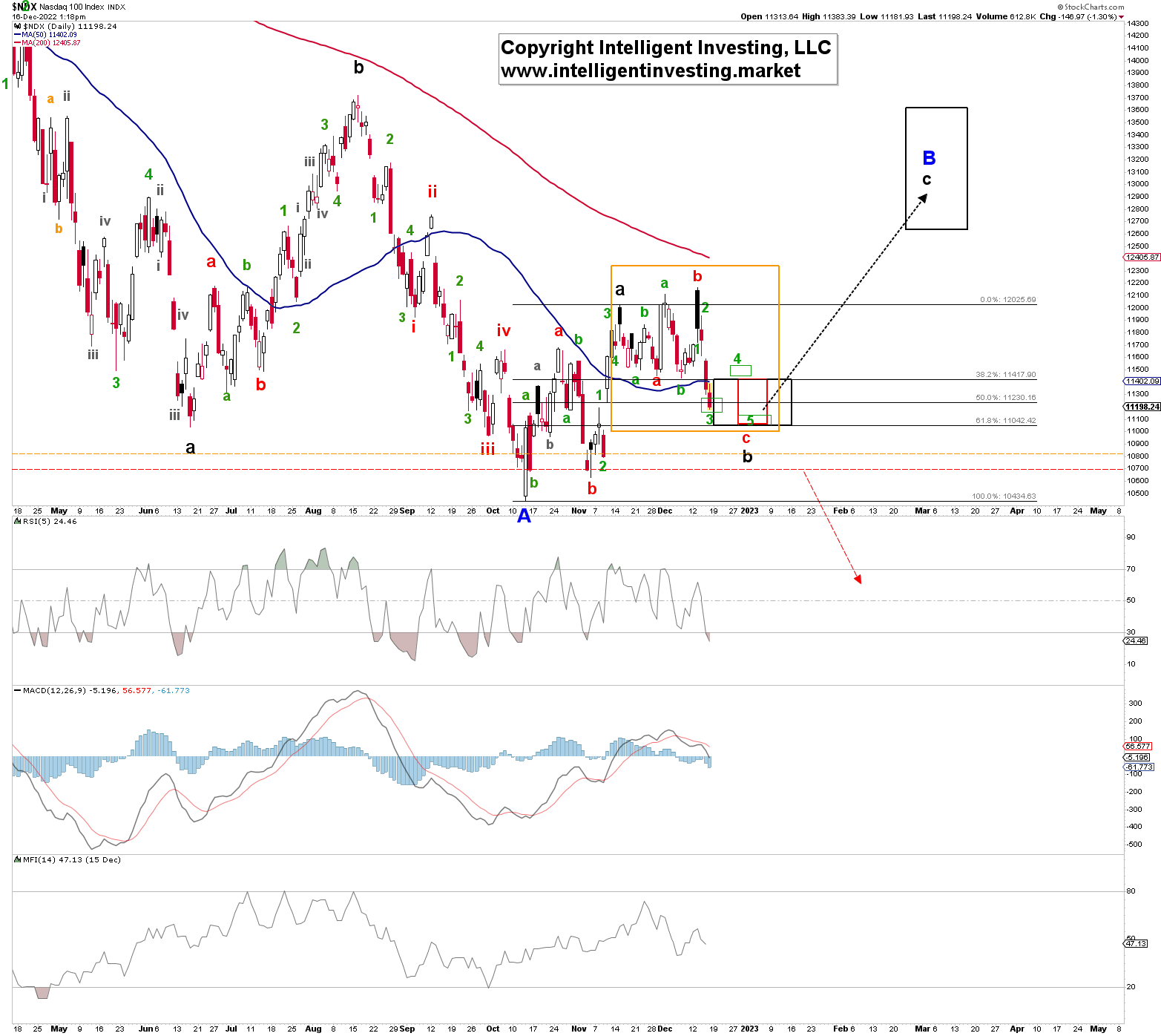Nasdaq 100: Dip Becomes Complex
2022.12.17 01:31
[ad_1]
Last week (see ), we found for the (NDX) using the Elliott Wave Principle (EWP):
“We are most likely dealing with an irregular expanded flat, a 3-3-5 pattern, the decline from the December 1 high (red W-b) should unfold in five waves. Thus I expect the current rally to fizzle out at around $11,700+/-100 for green W-4 before green W-5 takes hold to ideally $11,355+/-55 (green dotted arrow).”
The market invalidated our primary expectation* as it rallied on Tuesday to $12166 but failed to close above the December 1 high. It then dropped below last week’s low yesterday, telling us the dip was not complete. See Figure 1 below.

Namely, the most variable -and therefore difficult- part of the stock market is the corrective structures. Identifying every twist and turn correctly in a correction is impossible. Why?
There are three main corrective structures: zigzag, flat & triangle. All three are A-B-C structures but are internally different. Zigzag: 5-3-5, flat: 3-3-5, triangle: 3-3-3. Besides, a flat can become irregular, expanded, or contracted (called “running”), giving us six flat patterns to anticipate alone. Moreover, corrections can also become extra complex by forming double structures.
In this case, a zigzag+flat. We then have to add additional labels: W-X-Y. In the case of the zigzag+flat, the end of the 1st zigzag is then W. The connecting bounce X and the end of the final flat Y. I prefer to then re-label everything to simply a larger A-B-C. See red W-a, b, and c in the orange box in Figure 1 above.
- The index topped for black W-a on November 15. It dropped in three (green) waves to the November 29 low: red W-a was a zigzag.
- The correction could be considered complete by then. But based on additional information that became available to the market decided to tag another (green) a-b-c pattern into this Tuesday’s high: red W-b was flat.
- Now the index is declining in a five-wave impulse pattern from that high: red W-c.
This may sound complex, as it is not something anyone can foresee, and why the EWP is not for everyone, but it is also a great learning experience. Thus, the primary expectation of black W-b from a month ago remains the same; it simply morphed twice. We now have a zigzag+flat pattern, which gives us an overall larger flat (black) W-b. We currently track these five (green) waves lower because flat corrections end in five waves.
W-3 should ideally reach $11100 +/- 100. Green W-4 should bounce back to around $11500+/-100 before green W-5 takes hold to ideally $11000 +/- 100. Note these target zones are based on standard Fibonacci-based extensions and retrace.
The market can always decide to deviate, i.e., extend. However, the W-5 will bring the index even more profound and better into the ideal red and black target zones. From there, my primary expectation remains the next more significant rally (black W-c) to $13.4+-/-0.5K to complete the blue W-B.
The index will still have to break below $10,800 and $10,700 (dotted orange and red horizontal lines, respectively) to tell us the black W-c will likely not happen.
[ad_2]








